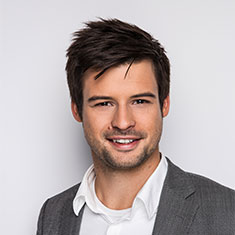Comprimato was born from a unique idea of leveraging the power of GPU’s for JPEG2000 video compression.
What first started as a university project quickly turned into a successful start-up.
In this exclusive interview with Production360°, CEO and co-founder Jiri Matela explains how the company helps industry leaders including ESPN, NOKIA and IMAX simplify their video processing.
What was the origin of Comprimato?
Brno, in the Czech Republic, is a university town with a strong reputation in science and technology. With some colleagues, I was studying the potential for software solutions to improve the quality of live video communication as part of a university project. At the time, encoding and compression was all done in expensive, custom-designed hardware.
Having developed some ideas that looked promising, we started Comprimato 10 years ago to continue their development and to bring them to market.
What was the background to the need for software solutions?
Leading IT venture capitalist Marc Andreessen famously said “software is eating the world”. That is certainly true in our industry: software is eating broadcast. Everything now depends upon the move from bespoke, broadcast industry specific hardware to software architectures. Developing specific hardware appliances for a relatively small market like broadcast means that they are inevitably very expensive. They are also inflexible, because they can only do one thing.
The vision was not just to replace hardware appliances with software equivalents, but to break the functionality down into software services so users could build precisely the signal processing flow they need for one particular task, then assemble a different set of functionalities for the next task, virtually instantaneously.
Take our speciality. Encoding high quality video used to rely on expensive, single-function hardware devices. Now it is a docker container on standard IT hardware, or even in the cloud for a no-hardware solution.
Software architectures and the cloud are democratising access to what was once considered “broadcast quality” production. That opens up the potential for new live content, like better coverage of more sports.
What was the Comprimato contribution?
One of the key components of a live production workflow is the ability to encode content, in visually lossless high quality – in real time for the contribution link from the event to the broadcast or streaming centre.
We realised that the GPUs, which were becoming standard in PCs, were actually parallel processing engines. That provided a route to the acceleration of video encoding.
We started investigating this concept in 2008, and by around 2011 we had a prototype of the world’s first GPU accelerated JPEG2000 codec. It was capable of realtime encoding up to Ultra HD using a standard server, and the JPEG2000 codec which was widely recognised as the best available at the time for contribution circuits.
The belief was that this was impossible without custom hardware chips. We showed that it worked in a standard GPU.
This idea of JPEG2000 encoding in a GPU was the basis for your doctorate. How did it become a product?
We started simple. At first, we licensed the codec, for applications like movie production and digital cinema, and satellite and medical imaging, as well as for broadcast. Today, every major Hollywood studio is using Comprimato in their production pipelines.
The company evolved to provide some additional video processing – like frame rate conversion – as well as encoding, in a software product, to run in the cloud or on premises on standard, readily available hardware.
As you were establishing the business, was there a breakthrough moment?
We were lucky in that we identified a few opportunities with major sports broadcasters early on. Working with them helped them realise the huge benefits of our software approach. And it helped us learn a lot about how live productions operate and what they need from their systems.
In the end, we showed them the real, practical advantages of our fast software processing, and they became pioneering users.
Comprimato became known as the JPEG2000 company. Have you added broader capabilities?
I think a really good example of the way our technologies develop to meet real needs is around the NDI format.
Just a few years ago, the market was quite wary of this proprietary standard for IP connectivity, using mild compression. The SMPTE ST 2110 family was newly codified, which is of course uncompressed.
Today, NDI is widely used as a very practical mezzanine format, which is particularly good for cloud production. The challenge for broadcasters and production companies is to organise cameras and other feeds into the cloud, securely and reliably, and convert them to NDI. We have tools to do this which are now widely used.
And the company is still based in Brno?
Yes. Thanks to the universities here, we have access to great engineering skills. We have to teach them about broadcast, but they come with the design skills we need.
How do you manage future developments?
We start out by being as close to our customers as possible, so that we understand the issues they face and can find solutions that really work.
I have already talked about NDI. This is part of a broader move which relies on virtualisation to achieve practical broadcast production in the cloud. This delivers all sorts of benefits: less hardware moved around to venues, ready access from any location, much lower carbon footprint and more.
Comprimato fits into this by providing key functionality as SaaS, so producers pick the functionality they want, with our software providing a single point in the content chain. So feeds can be encoded, or transcoded, between JPEG2000, NDI or JPEG-XS/TR-07.
But we can also add other functionality at that point, like live standards conversion. So the production company can have a bunch of feeds in one codec in a 50 Hz country and deliver them to the broadcast centre in a 59.94 Hz territory, without having to worry about any of the details or devoting staff to aligning and maintaining each step of the process.
Remote and cloud production is certain to be the way of the future, not least because it provides a dramatic reduction in carbon footprint for the broadcaster. We will continue to work with the industry to develop high performance software to deliver the interworking and connectivity they require.





